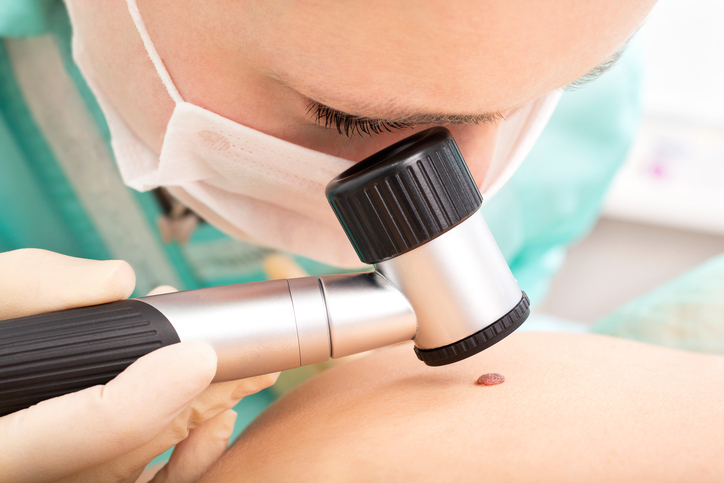Moles: why are they increasing and what do they mean? Could they be a problem?

Birthmarks are present on our skin at birth. But most start to form during life. Some are lifelong and some need to be monitored. The dangerous ones even need to be surgically removed.
Birthmarks can be present from birth, but they can also be acquired during life. In both cases, they are usually benign. But they need to be monitored.
They can develop into melanoma, which is a dangerous type of skin cancer. It originates directly in the melanocytes (skin cells). These produce skin pigment.
It appears after acute exposure to sunlight, but also after prolonged repeated exposure of the skin to UV radiation. Research by Australian scientists has shown this.
From the pigment or from a blood vessel

A mole can arise either from pigment cells in the skin or from a blood vessel. This is why moles are divided into vascular and pigmented.
The vascular ones are in the form of red areas on the skin or in the form of dilated and multiplied blood vessels under the skin.
In this form, they rise above the level of the surrounding tissue. They contain hair cells filled with blood. Their colour may be not only red but also purple.
The second group are pigmented moles or nevi. They are made up of a cluster of pigment cells called melanocytes and contain the dark skin pigment melanin.
Classification of moles
Pigmented moles are divided according to when they were formed. They are divided into congenital and acquired. The size of congenital ones can be less than 1 cm, but in some cases large areas of several centimetres are formed.
Their surface may be flat, aligned with the skin, or it may be convex. The colour tends to be brown to black and there may be hair on the surface. For congenital nevi of larger size (over 0.5 cm), follow-up by a dermatologist is necessary.
Acquired nevi tend to be smaller in size - no more than 2 cm. However, more than 100 may form over the years. The highest increase is in children before puberty.
Common and atypical birthmarks
Subsequently, they are divided into common and atypical pigmented nevi. It is important to observe their colour, size, shape and surface. In addition, it is necessary to note their bordering.
Common nevi are brown in colour (various shades), but their colour is uniform. The surface is usually at the level of the skin, but they often grow above the surface (warts). Their borders are distinct, sharp and regular.
In this type of birthmark, removal is not necessary. They are removed when they are in the way (in women in the bra area).
The second group are atypical nevi, otherwise known as dysplastic nevi, which are irregular in shape, bordered and vary in colour. This group is at higher risk of developing cancer.
Surgical removal is also recommended for this reason. This is especially true when a so-called halo nevus appears. You can tell when it has a white, depigmented border.
If an examination is suspected

If a person suspects that a mole is not well, he should see a doctor. A dermatologist will examine the mole using a microscope (dermatoscope).
Harmless birthmarks can be removed, for example, by laser. In the case of a possible melanoma, surgical removal is necessary, under full anaesthesia. The surrounding area must be removed together with the mole.
With a malignant melanoma, the lymph nodes in the vicinity must also be removed, as they could be a source of cancer and further metastases in the body. Sometimes the procedure must be repeated or chemotherapy or radiotherapy must be administered.
The incidence of melanoma has been increasing recently. Therefore, it is better to check the moles regularly. When in doubt, a professional examination is best.
A dermatologist can very quickly determine whether a mole is benign or malignant, which can quickly develop into melanoma.
Nevi in childhood
Unless they are congenital birthmarks, the highest proportion of birthmarks occurs in the period from childhood to puberty. The number of birthmarks can be up to a hundred.
In the case of congenital ones, examination is suspected in hospital. And in the case of acquired ones, it is important to observe them. Shape, asymmetry, size, colouration, borders and rate of change.
Prevention is important, the parent's knowledge of it and how to prevent it. Protection of the skin for UV rays in the first place. And if suspected, examination.
Not to expose oneself to the sun in summer periods between 11 am and 3 pm. To prevent sunburn and to protect the skin properly, in the form of clothing and sunscreen.
Moles or melanoma?
Many people confuse nevi with melanoma. Melanoma is a form of skin cancer. It is aggressive and grows quickly. It also spreads quickly (metastasizes), mainly through the blood.
It grows rapidly, has irregular edges, shape, coloration (brown, white, black). Often it is inflammatory, red in color, bleeds. Typical is discharge, wetting and itching or pain.
ABCDE analysis (abbreviations of English words) will help as an aid:
- A for asymmetry, which is an irregularity in the shape of the
- B for border, whether it is sharp or not
- C is for color (color and its homogeneity)
- D for diameter, when the size is over 6 mm
- E for evolving (change in size, shape and colour)
Sun exposure that is intense is very dangerous. It is these rays of the sun that are most conducive to the development of skin cancer. In women, melanomas are most common on the lower legs, in men on the back.
Video about birthmarks
Diseases with symptom "Birthmark"
Interesting resources
Related










